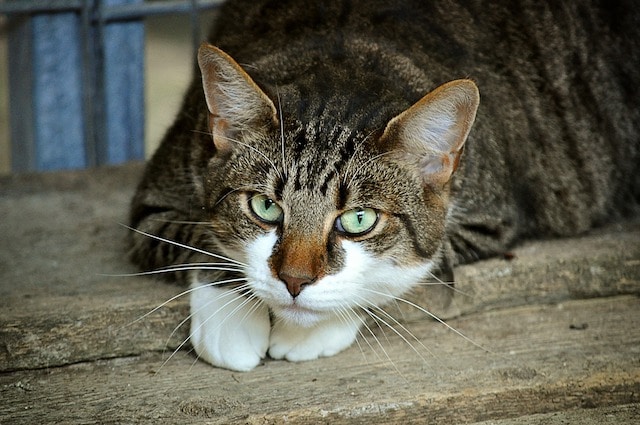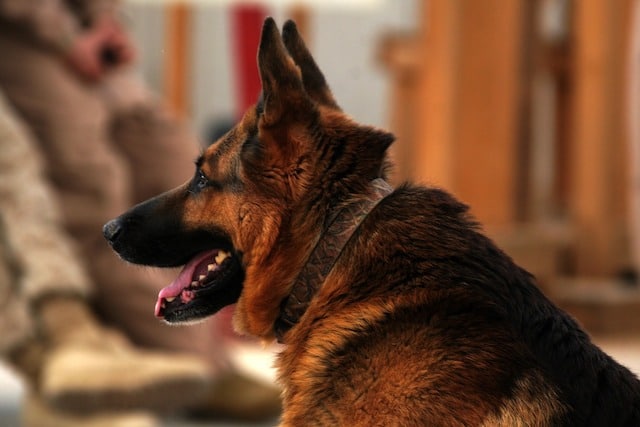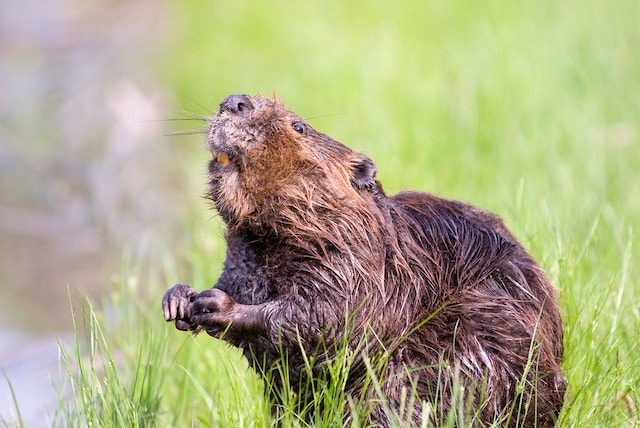From Poodles to Pugs: What Explains the Variety in Dog Breeds?
Why Dogs Have More Style Options Than Your Wardrobe (And Other Mind-Blowing Animal Facts)
Cat lovers, brace yourselves – today’s spotlight shines on our canine companions. Before you protest, let’s acknowledge the obvious: cats rule the internet with their Maine Coon fluff and Russian Blue mystique. But when it comes to sheer variety, dogs are evolution’s ultimate customization project.

The American Kennel Club officially recognizes 200 dog breeds, yet whispers about 340 global varieties linger in kennel club corridors. For comparison, the feline world boasts about 73 recognized breeds – though cat fancy organizations seem more relaxed about paperwork than their dog-obsessed counterparts.
Now let’s get weird. How many giraffe breeds exist? Zero. Chimpanzee varieties? Still zero. Humans? Despite our 21 ancestral hominid cousins, modern humans stubbornly remain one species. Even nature’s most creative designer never produced 340 variations of any wild creature.
Here’s the twist: breeds ≠ species. Those teacup Chihuahuas and barrel-chested Mastiffs making awkward Tinder matches? Same species, different fashion choices. Centuries of human meddling created this diversity through selective trait amplification – like biological photoshopping. Wild animals evolve new species over millennia; humans made designer dogs in mere centuries.
The real shocker? Horses outdo even dogs in variety, with 400-800 breeds documented. While dogs specialized in companionship and pest control, horses powered civilizations as war machines, farm laborers, and racing athletes. But let’s be honest – no stallion ever perfected the “puppy eyes” that empty treat jars worldwide.
Dog Domestication

All dogs wagging their tails and being the best boys and girls in the world today trace their roots back to the same species of now-extinct wolf closely related to the modern gray wolf. Genetic tests confirm this.
As for when dogs were domesticated, that’s a little more of a complicated question to answer. Some sources would suggest about 15,000 years ago. But there is some evidence that it could have been as far back as 40,000 years ago. And there is evidence that wolves could have started on their journey to becoming full-fledged dogs as far back as 130,000 years ago. That means while we were getting to know our canine companions, it’s entirely possible that Neanderthals were as well.
While the official date of domestication remains up in the air, so too does the location. In fact, there is some evidence that dogs might have been domesticated two times, in two totally different places. Once in Asia and once in Europe. This is by no means agreed upon in the scientific community, however. Others have found evidence that Europe is the soul location of domestication.
Genetic evidence suggests that dogs came to North America when humans did, over 10,000 years ago across the Bering Strait. Many of these dogs of Asian origin were bred out by European stock when Europeans arrived and colonized the land, however, some still remain. In particular, this genetic history can be found in species like the Peruvian hairless and Xoloitzcuintli.
Breed Differentiation
The breeding of dogs is a very old practice. As we mentioned before, there are numerous breeds of horses, so humans have had a history of breeding animals for specific purposes. We have draft horses, racehorses, show horses, and so on. Mankind has long understood that you can take two animals that have characteristics you like, breed them, and get offspring that will also have the characteristics you want.
Dogs were likely originally bred for hunting, for protection, and for herding before much else. Over the centuries, these dogs were bred into more specific groups, which is why today we have sheepdogs, collies, Aussies, and more that are all herding dogs, but all visually diverse.
Dogs have been bred for herding for a long time in a number of places. While herding dogs are all meant to do the same thing, their genetics can actually be quite diverse. It seems like they might all come from the same place, but evidence has shown that’s not true. And, in fact, not all dogs heard the same way. Some have been bred to be very independent and live with the herd that they are looking after. Others are far more dependent on their human companions. The methods and strategies these dogs use vary considerably, indicating that the breeds came into existence separately from one another via different methods.
While working and hunting dogs can trace their origins back quite far, the majority of dogs have only been around since the Victorian era. Dog breeding really took off during that time, and not all of the bred dogs were intended for work. Darwin and his theories were cutting edge, and Victorians were enthralled by the idea of natural selection. They wanted to try their hand at breeding the traits they sought out specifically.
The Effects of Breeding
The effect of selective breeding can actually be seen through documentation. Several sources on the internet have compared images of dogs from 100 years ago to modern times. The difference in the way breeds look can be dramatic. Bull terriers were almost unrecognizable a century ago compared to today’s standards. Modern pugs and Boston terriers have much flatter noses, which can cause serious health problems for the animals. Modern Shetland sheepdogs are almost twice as big as they were a century ago.
All of these changes were conscious choices by breeders, and now, in our time, they are expected characteristics whether they are beneficial or harmful to the breed. Where in the past dogs were bred for a purpose, for work, these modern dogs have often been bred just for an aesthetic with little concern for the dog itself. Some dogs will have physical health problems ranging from bone disorders, breathing problems, and poor eyes to behavioral issues like aggression as a result.
Another issue with this selective breeding, especially as it relates to what people consider purebreds, is a lack of genetic diversity. This can mean that, going forward, dogs that are too closely related genetically will continue to exacerbate the health concerns in the next generation if the genetics aren’t altered. This is one of the many reasons why some people consider it better to adopt dogs from shelters rather than pay for puppies from breeders, not to mention that dog breeding can often be a cruel and grueling process for dogs involved that are forced to continuously breed.
How Come Different Breeds Are Still the Same?
The great diversity in dog breeds presents a problem insofar as reproduction is concerned. Because all dogs are genetically the same species, they can reproduce with one another. That doesn’t sound like an issue until you look at a chihuahua and a Great Dane. Scientifically speaking, there is no reason those two dogs can’t mate. But practically speaking, that could be catastrophic, especially if the chihuahua is female. It may not even be possible for a female chihuahua to carry puppies from a Great Dane, so trying to breed them intentionally would be extremely unethical and cruel.
Even if the logistics of the actual act worked out, the offspring would be potentially very unwell. The resulting puppies could have any number of unexpected health issues. This could range from physical issues caused by the three differences to serious behavioral issues.
The reason this pairing is still a potential success, on a genetic level, is because there is no real difference on a genetic level. Breeding of dogs is not unlike engineering apples. A farmer might cross-pollinate two sweet kinds of apples together to make one new, ultra sweet apple as a result. The new fruit is still an apple, of course.
Is it possible that dog breeds could one Day become their own distinct species? Different the way red wolves and gray wolves are different? Never say never, but it’s not likely. It takes hundreds of thousands of years for mammals to evolve into separate species from their closest cousins. Remember, Neanderthals and homo sapiens, that’s us, were both human. We could successfully breed with them, and in fact, we did.
For a breed of dog to become a new species it would need to be isolated from all other dog breeds for tens of thousands of years and undergo the process of evolution, mutation and adaptation until it was sufficiently different, on a genetic level, from other dogs to qualify as something new. Our intentional breeding has changed the dog’s phenotype, which is the way it looks on the outside, but the genotype, essentially what it is on the inside, is the same.
Why Are There More Dogs Than Cats?

If you’re a cat lover, you might have noticed something curious: why are there so many more dog breeds than cat breeds? Sure, dogs were bred for work—hunting, herding, guarding—but even the ones bred purely for looks seem to outnumber cats by a landslide. And let’s not forget the sheer variety in their appearances. A Great Dane and a Chihuahua look like they belong to entirely different species, while a Siamese and a Maine Coon? Not so much. So, what’s going on here?
First off, history plays a big role. Dogs have been by our side for tens of thousands of years, bred for specific tasks like hunting or herding. This meant humans selectively bred them for traits that suited their jobs—speed, strength, size, you name it. Cats, on the other hand, only started hanging around humans about 10,000 to 12,000 years ago, and even then, they weren’t exactly “working animals.” Sure, they kept mice out of the grain stores, but let’s be honest—cats didn’t need specialized skills or unique physiques to do that. They were just naturally good at it. So, while dogs were being shaped into all sorts of shapes and sizes, cats stayed pretty much the same.
Then there’s the psychology of it all. Cats are famously independent. They don’t exactly follow orders or care much about pleasing humans. Dogs, though? They’re pack animals at heart, descended from wolves that worked together in groups. This made them naturally inclined to follow directions and bond with humans. Early humans quickly realized that dogs could be trained to respond to commands, making them ideal partners for work and companionship. Cats, meanwhile, were more like roommates who occasionally did you a favor by catching a mouse.
That said, cats aren’t completely devoid of variety. Take the Savannah cat, for example. This breed is a mix of domestic cats and servals, resulting in a cat that’s much larger than your average house cat. A healthy Savannah can weigh up to 30 pounds—compare that to the typical 8 to 12 pounds of a regular cat. It’s like the Great Dane of the feline world. But breeds like the Savannah are rare, and most cats still fall into the “small, fluffy, and aloof” category.
You will get it, why do dogs outshine cats in the variety department? It boils down to purpose and personality. Dogs were bred for specific roles, which led to a wide range of shapes, sizes, and temperaments. Cats, on the other hand, were just… cats. They didn’t need to change much to do their job, and their independent nature made them less likely to be molded by human desires. Still, whether you’re a dog person or a cat person, there’s no denying that both have their own unique charm—even if one comes in a few more flavors than the other.
























